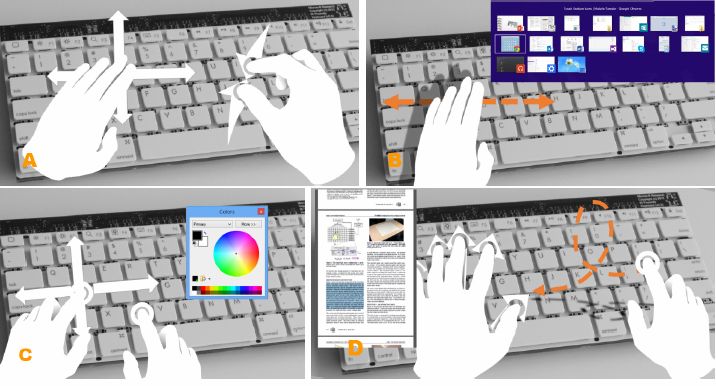

One of the many perks of using a laptop is having gesture controls on your keyboard. The lack of having a mouse connected to the computer has led to innovations that essentially make it obsolete for laptop users. Simple gestures across the trackpad allow you to perform actions that would typically require a mouse on a desktop PC. Tapping to zoom, pressing to click, and swiping to navigate is not only easy, it’s intuitive. And up until now it hasn’t been possible on a desktop computer (without actually adding a separate trackpad).
Microsoft is currently experimenting with new technology that combines popular trackpad gestures on desktop keyboards. The prototype, called “Type-Hover-Swipe,” is an augmented mechanical keyboard that senses motion performed on and directly above the keys. The proximity sensors are cleverly hidden within the keys themselves and allow for rich and expressive motion gestures. With a total of 64 sensors, the keyboard has an ultra-fast refresh rate of 300Hz and has no problem tracking rapid hand movements. With this keyboard connected to your computer, you may never need to use a mouse again.
The traditional keyboard and mouse setup has been in place since the 1960s. Although it works perfectly fine, there’s no denying this is an antiquated system. A gesture-controlled keyboard could propel PCs into the next generation of computing. Should there be any difference in the way we use our phones, tablets, laptops, and desktops? A fused method of computing seems like it would be the easiest and most natural way to use these devices, but will it catch on?
What do you think? Will you adopt a mouse-less keyboard? Let us know in the comments below.
